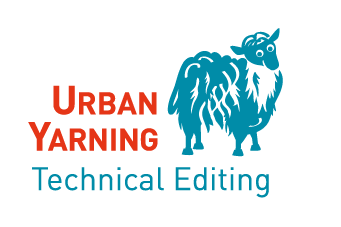Hi there,
did I tell you that I have a list for newsletter topics for more than a year? yes, preparation is everything. If I were bored, I could write them months in advance. Or I could knit. So much to being prepared.
So, how many of these topics did I use until now? One if I remember correctly. Among these topics there are a few which should be called “ongoing series”. And you probably guessed it: This is the first instalment of one of those.
My goal is to introduce you to the books I use for my editing work. These could be useful to you as well, don’t you agree?
Whenever I get interested in a new topic or I want to learn something new, I start searching for a book about that. This means that I have an extensive library, especially for knitting: reference books, stitch dictionaries, pattern books; classics, the newest-of-the-new, basics, new techniques or trends - all there. And since I started working as a tech editor, these are tax deductible too. I need them for work, don’t I?
Since I moved here, I have a separate shelf for my crafting books but one or two books live on my desk because I use them so much.
The most used book from my knitting library is Kate Atherley’s “The Beginner’s Guide to Writing Knitting Patterns - learn to write patterns others can knit”, for short “Beginner’s Guide to Transfiguration” (in my family).
From the introduction:
”how to translate your great knitting project into a set of instructions that any other knitter can follow.
I provide concrete guidelines, with lots of examples, on topics including:
what informations needs to be included in a knitting pattern
How to properly and clearly communicate sizing and measurement information
What schematics are, why you need them, and how to create them
Zwo to use charts and written instructions to express special pattern stitches such as cables and lace
Stitch nomenclature (especially related to cables), abbreviations, and glossaries
How to handle multiple sizes and versions
Use of brackets and * to indicate repeats
How to establish a personal style sheet
And much more.”
The “much more” includes formatting and layout, the process of writing, editing and publishing a pattern, selling your pattern and copyright.
The book doesn’t explain how to get creative and come up with a design or how to get the idea out of your head and onto your needles. But it shows the practical side of the process. Of course, it isn’t complete, you can’t learn how to grade from it, for example, but you get an introduction and tips how to proceed from there.
What I love about this book is that it gives you structures from where you can start or improve your process as a designer. It explains the structure of the designing process which gives you a outer frame in which to work. You can easily build a to do list to guide you through the process and manage a design project, starting with an idea, ending with a published pattern.
But this guide gives you the structure for an individual pattern as well. You can use it as a template to fill in. It provides a framework for writing the pattern for your wonderful design. You don’t need to sit before a blank page and start with inventing the wheel each and every time. There are a basic pattern template and lists of abbreviations and standard terms as well as a glossary included. And for that alone it is worth its money.
This guide is more helpful for a budding designer but it can be useful to streamline your process as an experienced designer as well. It can help you write patterns of a consistent quality and may show possibilities for branding as well.
The book itself has a great structure which makes it easy to work with. As well as the afore-mentioned lists there are useful tables strewn in throughout the book: needle sizes, the U.S. standard numbering system for yarn, a cable stitch format summary and many more.
And what I like best: There are clearly marked examples and tips on every topic as well as opinions of knitters on several questions. You can write the perfect (from a technical point of view) pattern but the knitter has to like and understand it because they won’t buy a pattern (or a second pattern) if they don’t. I know, I’m a very critical consumer of knitting patterns and have a list of designers I won’t buy a pattern from ever again :-)
The boring details if you want to check it out for yourself:
Kate Atherley 2015: The Beginner’s Guide to Writing Knitting Patterns. Interweave, imprint of F+W Media, Inc. (ISBN-13: 978-1-63250-434-0).
Frauke x
P.S.: I never forget the knitter’s view while editing a pattern. So if you have a pattern ready for editing, don’t hesitate to ask for a spot on my editing schedule :-)
